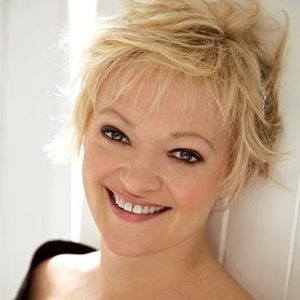GRAMOPHONE Review: Shostakovich Symphonies 8, 9 & 10 – Berlin Philharmonic Orchestra/Petrenko
 Recorded during lockdown, this trio of Shostakovich symphonies chimes quite dramatically with the mood of that time and speaks volumes as to the composer’s shifting state of mind between the war years and the death of his nemesis (if that’s not too strong a word) Stalin. Kirill Petrenko and the Berlin Philharmonic have few, if any, rivals when it comes to dynamic streamlined brilliance – it can and does take the breath away – but does it come between me and the raw emotion of these remarkable pieces, not least the harrowing Eighth? I would have to say yes.
Recorded during lockdown, this trio of Shostakovich symphonies chimes quite dramatically with the mood of that time and speaks volumes as to the composer’s shifting state of mind between the war years and the death of his nemesis (if that’s not too strong a word) Stalin. Kirill Petrenko and the Berlin Philharmonic have few, if any, rivals when it comes to dynamic streamlined brilliance – it can and does take the breath away – but does it come between me and the raw emotion of these remarkable pieces, not least the harrowing Eighth? I would have to say yes.
Let me start, though, with the good news and what I believe might be the reasons for it. The Tenth Symphony is by far and away the best of these three performances (are there more to follow?) and I would venture to say that this has a lot to do with the more classically forged nature, you might say orthodoxy, of the piece. Like Tchaikovsky before him Shostakovich ‘contains’ the big emotions of the Tenth within the formality of the symphonic structuring. Under Petrenko the great arc of the first movement is mapped with a grandly defiant symphonic logic. This is Shostakovich displaying his considerable credentials against all repressive odds. When it comes, the great central climax is of awesome power with a harmonic pull such as I have rarely encountered in a performance the piece. Thrilling.
And then there is Stalin tearing through the fabric of the symphony in that whirlwind scherzo. The hair-raising speed and precision of Petrenko and his orchestra’s rendition is as exciting as it is scary. And the way is then clear for the reflective (and tentatively upbeat) allegretto (marvellous horn solos) to start the renewal of self-belief and for the finale to reassert it. I’ve not heard a conductor make more of the timpani’s thunderous report of the composer’s DSCH monogram in the closing bars.
The Eighth Symphony harkens back to the Fifth in its opening measures and there is remarkable kinship in the second subject too. It is fabulously despatched here, no question. But this is an acutely psychological drama for the composer, torn between wartime anxieties and Stalin’s suffocating dictatorship – a litany of distress – and whilst impressive I just don’t feel threat in this performance’s climactic moments, not least those seismic percussion upheavals. Equally whilst the protracted cor anglais solo is possessed of a plangent beauty do we not require something plainer speaking and more strident in its desolation?
There are no ugly sounds in this performance – or indeed that of the Ninth – and surely there must be. I think of the ferocious third movement toccata and the military coarseness of the trumpet and side drum trio and the way the movement spills over into yet another percussive quake. Nothing here feels life-dependent or indeed truly intimidating. The Berlin Philharmonic juggernaut is state of the art impressive, shiny even, but never elemental.
The Ninth Symphony wilfully wrong-footed the Soviet establishment with its diminished scale, its wistfulness as opposed to despair, and its cynicism. The ‘Circus’ element of the upbeat movements is here more Cirque de Soleil than the traditional three-ringed variety and the very brief Largo which throws a lachrymose bassoon centre-stage is again inappropriately Berlin Phil stylish. I think the idea of the tragic bassoon transformed into a clown to signal the finale is a masterstroke – but could Petrenko have not persuaded his brass to sound just a tad more vulgar in the raucous entry of the ‘Red Army Band’ in the coda? It’s called characterisation and that for me is what is conspicuously lacking here.

Edward Seckerson meets JAMIE PARKER
You May Also Like

A Conversation With MARIA FRIEDMAN
02/09/2011
NOTES FROM LOCKDOWN: John Wilson in Conversation
19/05/2020
